In the UK most of what we learn about the two World Wars concentrates on events in Northern Europe. We know little about The Battle of Crete and the island’s occupation by Nazi forces between May 1941 and June 1945 - and we hear even less about the civilian lives lost.
This post, about my visit to Amiras, south east of the town of Viannos, is to mark Remembrance Day.
The black and white photographs on display in the tiny village of Amiras have such an immediate impact, it’s like I have been punched in the gut. There are so many portraits around the walls of the village’s exhibition space - hundreds of faces of youths - old men - that it’s impossible to take them all in at a glance.
Stunned, I turn to study one photograph of a youth with dark, soulful eyes. The caption below says that he was 18 when he was killed. Close by are the photographs of an infant boy, and another adolescent of twelve. All were murdered - massacred alongside their families, friends and neighbours, in the villages south east of Viannos in Crete, September 1943.
The guidebook has given me no warning about the scale of this tragedy. There is just one line about the village of Amiras that speaks of a war memorial to the Cretans who died in the Second World War.
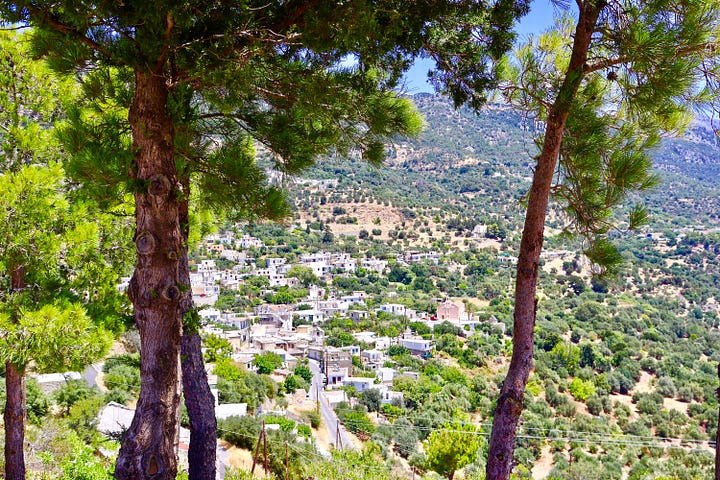
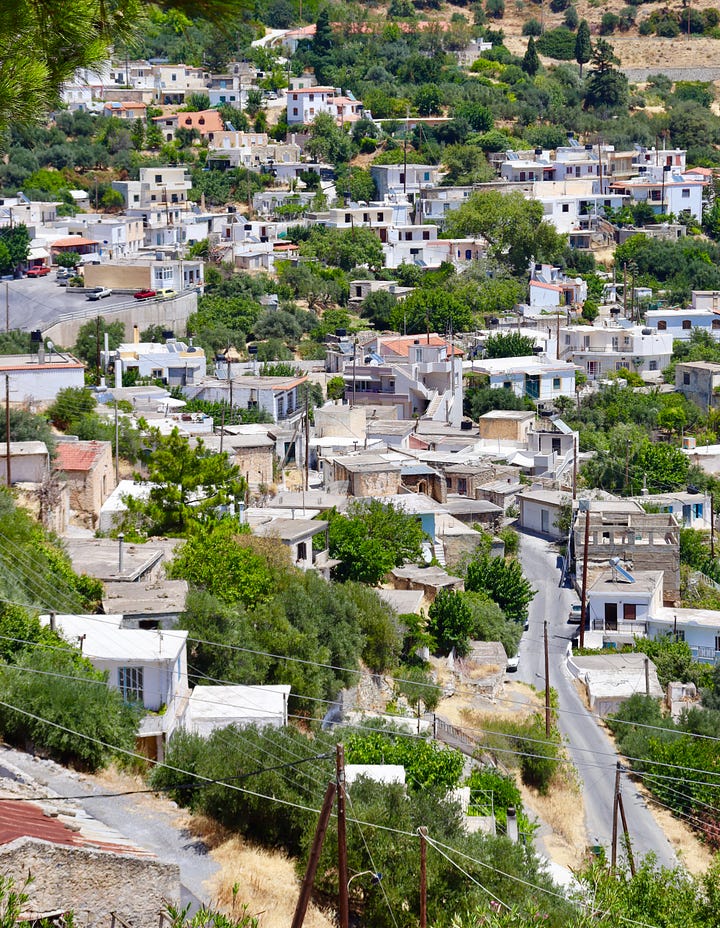
When I reached the war memorial earlier - set in a high place beside the road, with a sweeping view out to the sharp, blue horizon - there were only two other people present. They wandered around the stone figures for a few minutes, admired the view down to the sea, and then left. But the terrible list of red names carved into each sculpture arrested me -
How did so many die here – and why?
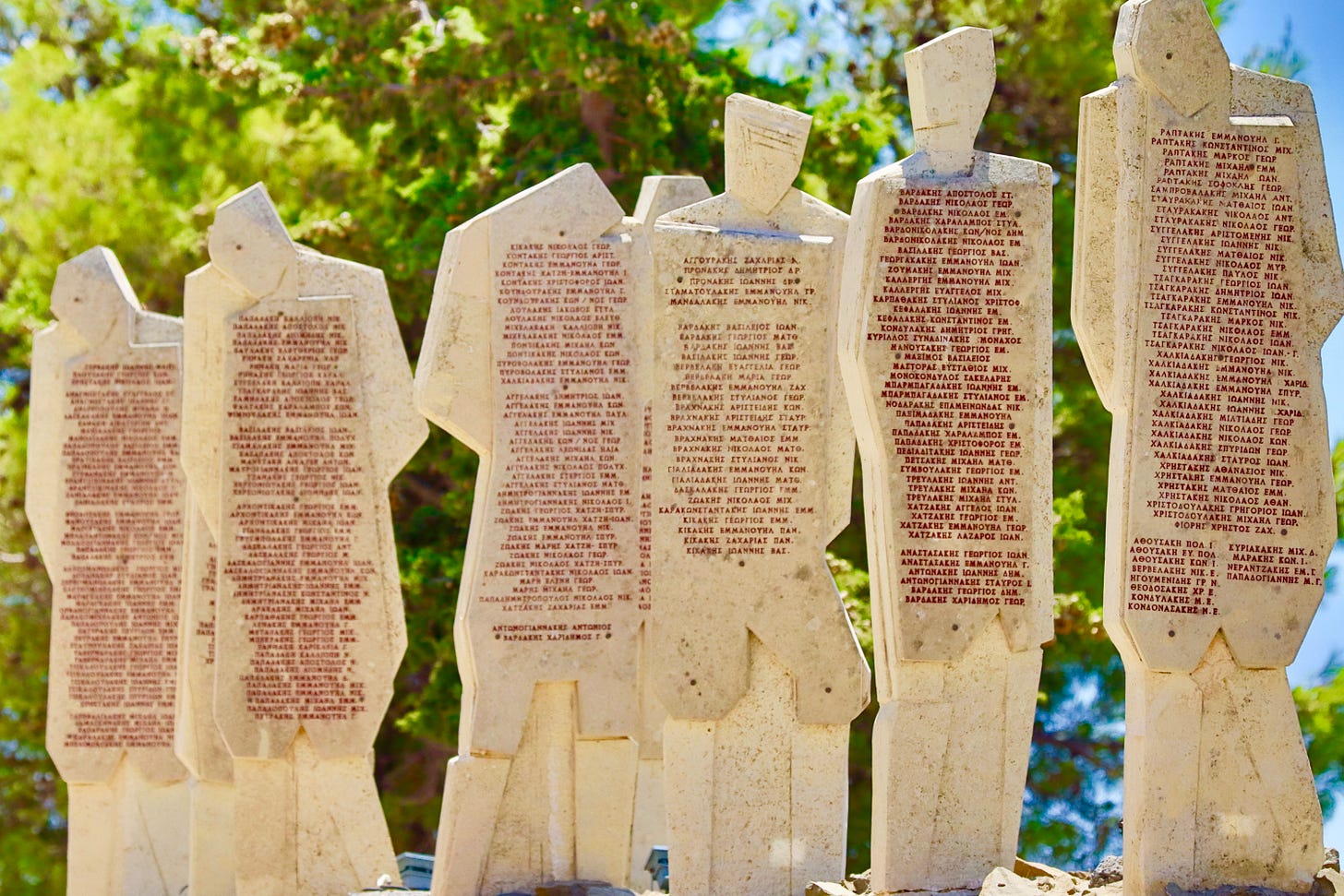
The story of the Holocaust Memorial of Amiras, told in the cool shade of the exhibition centre below the site, is so much darker than the guidebook suggests - and puts a human face to each of those inscribed names. This isn’t simply a memorial to Cretans who died in the war. This is a monument to one of the most deadly massacres that took place during the Axis occupation of Greece
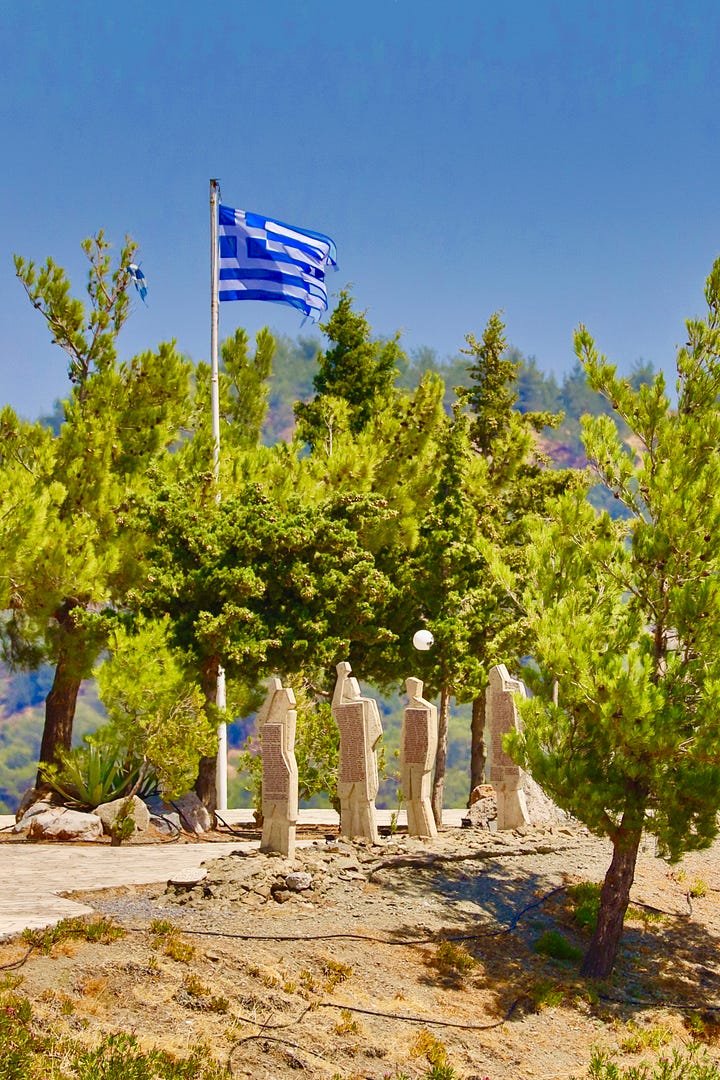
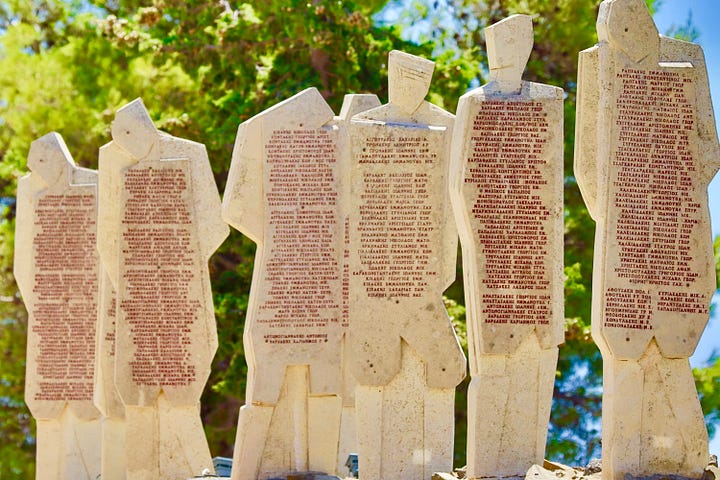
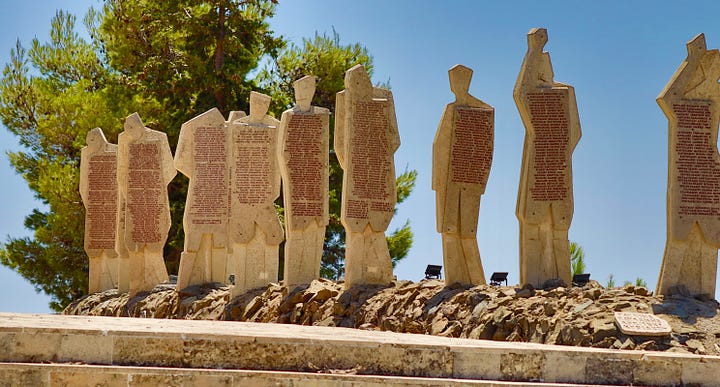
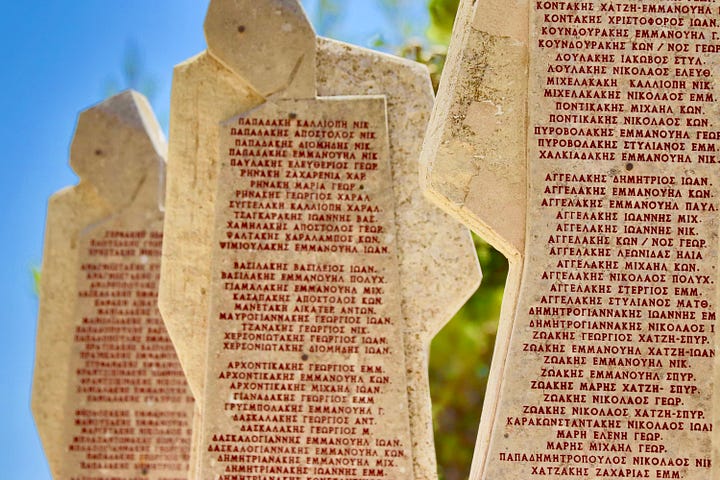
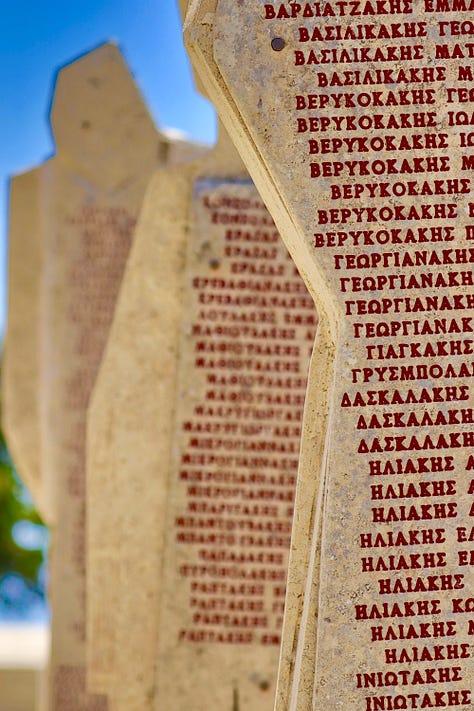
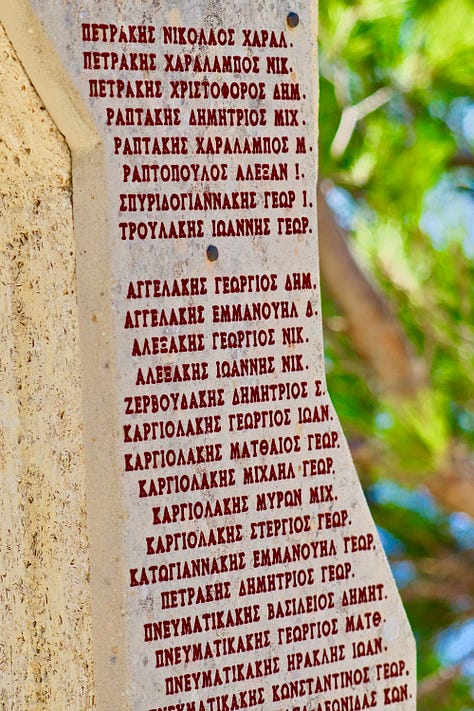

No one knows exactly how many men and boys from the 20 villages around Amiras were killed between September 14th and September 16th 1943, but it is agreed that the death toll was more than 500. The massacre was ordered by General Friedrich-Wilhelm Mueller, ‘The Butcher of Crete,’ as reprisal for a Resistance attack on German forces stationed close to the village of Kato Simi. Only the women were left alive - made homeless after the looting and burning of the villages that followed the massacre.
When I step away from the walls of photographs and go outside to collect myself for few moments, the lady overseeing the exhibition comes out after me. We speak for a while in a mixture of my faltering Greek and her more studied English. “I’m sorry”, I say, as I weep. “There are so many faces, I wasn’t ready”. “So many”, she agrees “- And for what...? Take your time. Siga, siga.”
When I go back inside, she shows me the rest of the stark exhibition display, with a sign on the far wall that reminds visitors that no reparations were ever paid for the loss of life, nor the destruction of the villages. Although Muller was caught in Prussia, and executed by firing squad for war crimes in 1947, no one else was ever brought to justice for the massacre. The burned out villages were rebuilt slowly…
Before I leave, the woman asks me to sign the visitors’ book. But what to say?
- ‘Thank you’?
- ‘A terrible thing happened here, and those who died should not be forgotten’?
I scribble a few lines, print my name and then sign and date it automatically, as if I were the witness to a crime. Later, I discover that the memorial is not just a place of remembrance, but that some of the victims are also buried here.
The massacre of the inhabitants of the French village of Oradour-sur-Glane is well known in the UK as a measure of Nazi atrocity, but the terrible massacres of the occupation of Crete are barely known beyond its shores. In the villages around Kedros, in the central Amari Valley, more than 160 people were massacred in August 1944. 180 were killed in Kardanos in 1941. In 1944 every man and boy from the town of Anogeia and within a one kilometre radius, was killed in reprisal for Resistance involvement in the British Special Operations Executive’s abduction of General Kreipe to Alexandria a few months earlier.
As I return to the car - past the memorial that the guidebook gives one line - I notice these lines carved into a stone at the edge of the site…
‘Passerby… If you walk full of courage.
If you love, and are loved…
Whatever good you had in life,
Was offered to you by those dead.’
This November, I remember them.

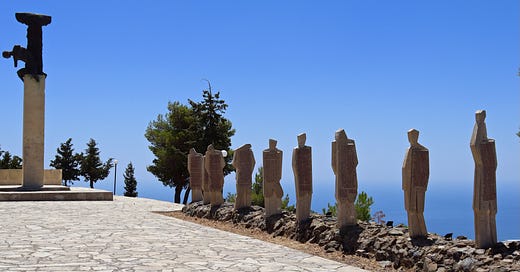



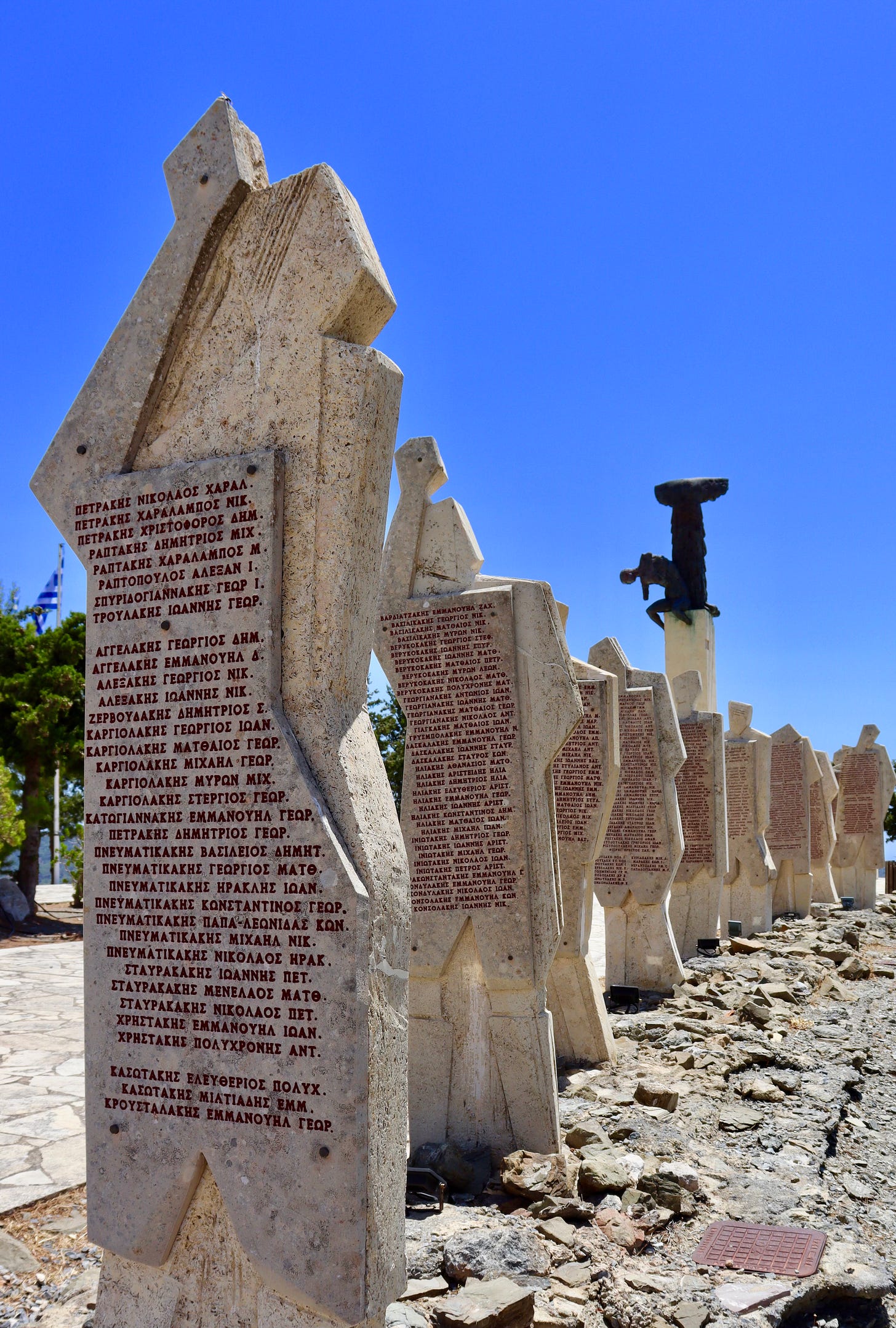
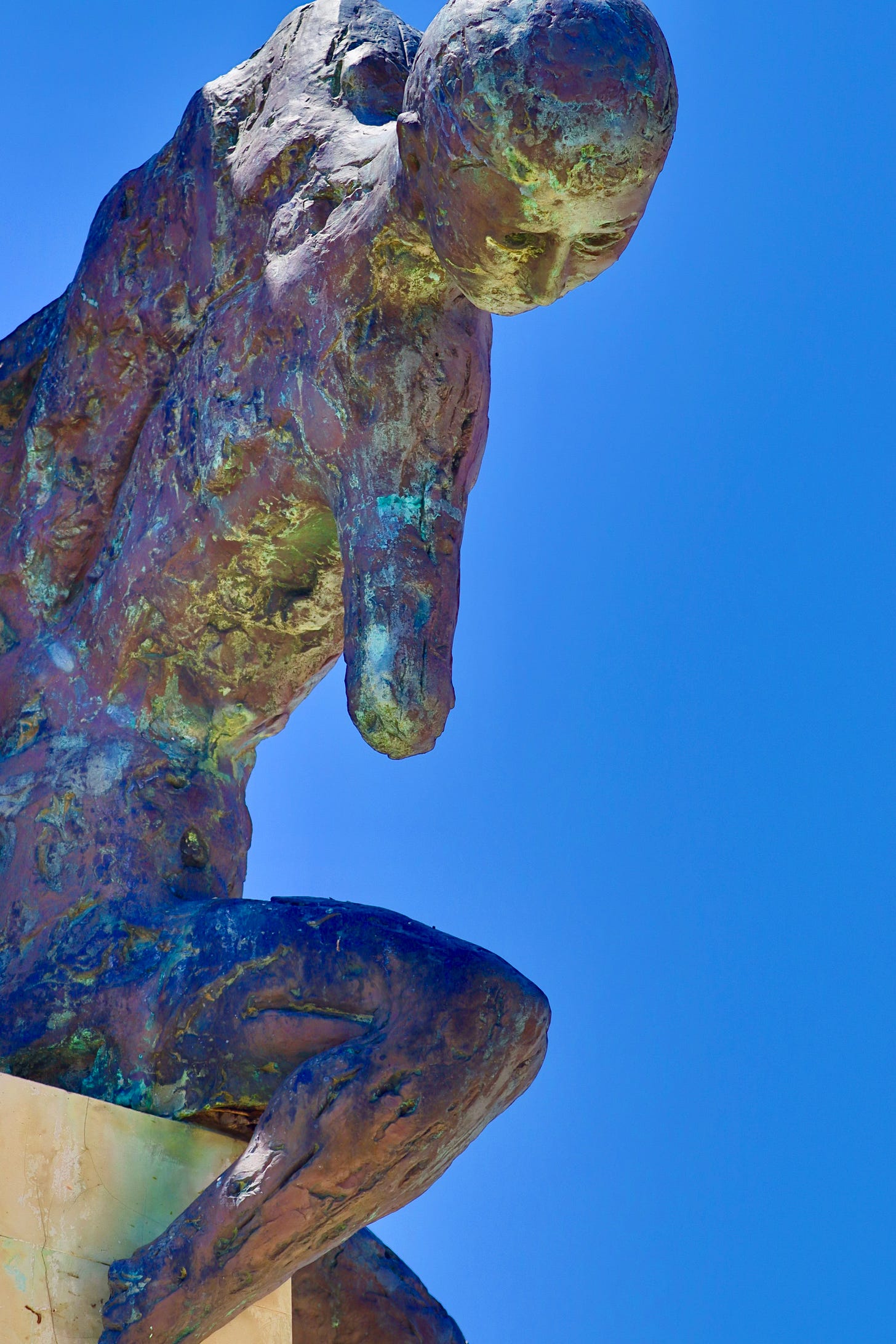
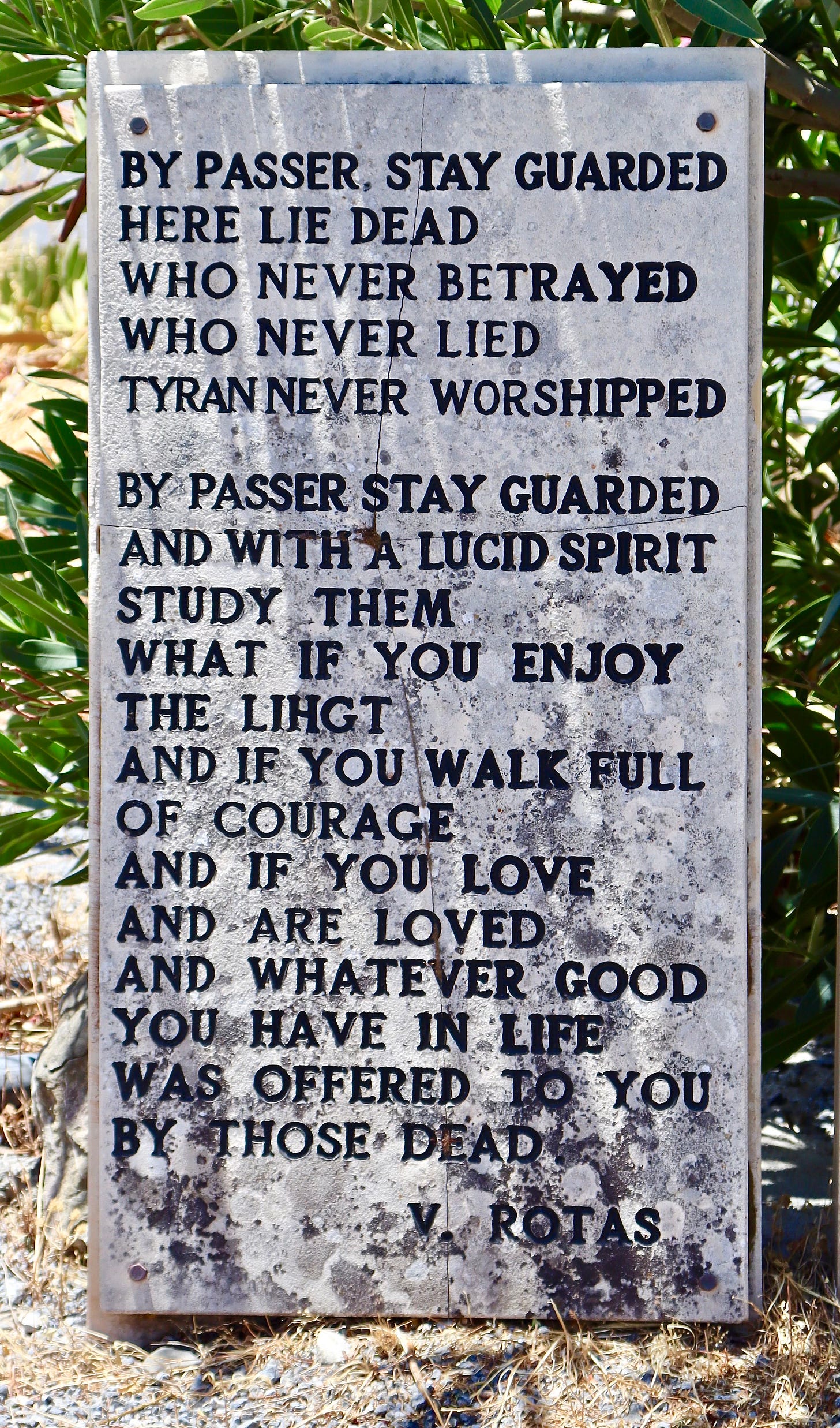
I have written about Viannos, the Kedros villages, Kandanos and others that were very well researched , but not often read. It is all in my blog hiddencrete.com and it has taken a lifetime to write as well as my books, Secret Crete. Here you will find many stories of Crete, most unknown to the British and completely forgotten by the Germans.
A very moving piece Claire. Many visitors to the site of these atrocities will only know part of the story......the Cretan people suffered badly during the German occupation. X